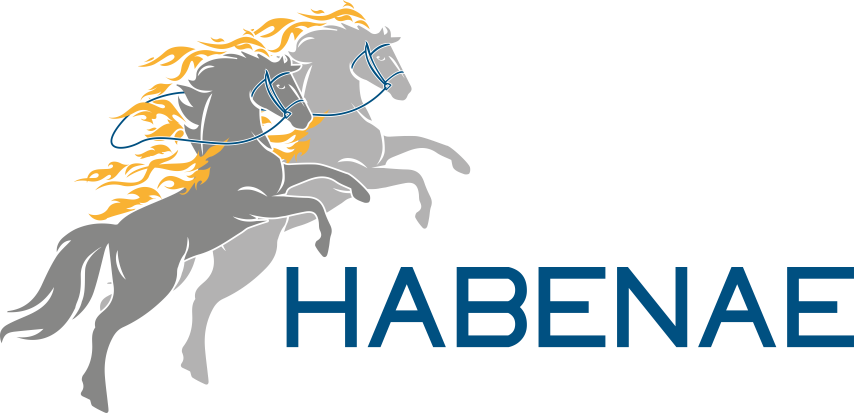Introduction to the Placement of RevOps
Revenue operations (RevOps) have become an integral part of modern business strategies, unifying sales, marketing, and customer success into a cohesive force. As companies strive for more efficient revenue generation, the question of where RevOps should report within the organizational structure becomes pivotal. Determining the optimal reporting line is essential for maximizing efficiency and achieving business objectives. Should RevOps report to the CFO for enhanced financial alignment, or should it report to the CEO to drive strategic initiatives? This blog post delves into these considerations, offering insights into how different reporting structures can impact organizational effectiveness and growth. Through strategic alignment, RevOps can play a critical role in enhancing collaboration, driving profitability, and ensuring all departments work towards shared goals.
Common Reporting Structures for RevOps
RevOps can typically report to either the Chief Financial Officer (CFO) or the Chief Executive Officer (CEO), each offering distinct benefits. Reporting to the CFO often underscores financial alignment, providing enhanced oversight of budgeting and fiscal management. This structure promotes data-driven decisions and strengthens financial visibility, which is critical for maintaining profitability. However, this approach may limit the agility required to adapt quickly to dynamic market conditions.
Conversely, having RevOps report directly to the CEO can enhance strategic coherence and align revenue operations with broader company objectives. This reporting line empowers RevOps to contribute directly to high-level decision-making, ensuring that revenue strategies are well-integrated with the overall business vision. While this structure can drive significant strategic advantages, it also requires careful attention to ensure alignment with financial processes and priorities.
Each reporting structure has its own set of challenges and advantages. The key is to select a structure that complements your company’s specific needs and goals. A tailored approach ensures that RevOps can effectively drive collaboration and alignment across all departments, ultimately contributing to a unified effort towards achieving business success. Understanding these dynamics is crucial for making an informed decision on the optimal reporting line for your organization.

Impact of Reporting Structure on Business Performance
The reporting structure of RevOps plays a critical role in fostering collaboration and alignment across departments. Companies with a robust RevOps function have been shown to experience 15% more profit than their peers. This underscores the significance of integrating RevOps effectively within the organizational framework. A structure that promotes collaboration can cultivate a culture of shared objectives, thereby enhancing overall performance.
When RevOps is aligned with strategic goals, it enables better coordination between sales, marketing, and customer success teams. This alignment can streamline processes, reduce inefficiencies, and drive profitability. However, the success of these reporting structures is heavily dependent on the organizational culture’s ability to support and sustain such alignment.
Effective communication is vital for ensuring that RevOps can facilitate data-driven decisions and strategic initiatives. With the right reporting line, RevOps can provide valuable insights and actionable data that propel the company towards its revenue goals. Organizations that have successfully integrated RevOps into their structure often report improved financial oversight and more agile responses to market changes.
Ultimately, the right RevOps reporting structure can catalyze enhanced organizational performance, fostering a unified approach towards achieving business success.
Aligning RevOps with Business Goals
Aligning RevOps with company-wide objectives requires strategic planning and seamless communication. Companies that invest in RevOps report 30% fewer go-to-market expenses, highlighting the efficiency that comes with alignment. RevOps should act as a bridge, ensuring all departments work towards common goals. Regular communication between RevOps and other departments is vital for maintaining this alignment and optimizing performance.
By serving as a central point for data collection and analysis, RevOps can provide valuable insights that guide strategic decisions. This role is essential for creating a cohesive strategy that aligns with both financial and operational goals. When RevOps is aligned with overarching business objectives, it helps in streamlining processes, reducing inefficiencies, and driving profitability.
Furthermore, the strategic integration of RevOps can facilitate better coordination between sales, marketing, and customer success teams, ensuring that all efforts are directed towards shared objectives. This alignment fosters a collaborative culture, enhancing overall performance and enabling the organization to respond more agilely to market changes.
Effective alignment of RevOps with business goals also involves regular reviews and adjustments to ensure continuous improvement. By keeping all departments aligned with the company’s strategic vision, RevOps can significantly contribute to sustainable growth and long-term success.
Factors Influencing the Ideal Reporting Line
The ideal reporting line for RevOps is shaped by a range of factors, including the size of the company and its industry dynamics. For smaller organizations, a direct line to the CEO can expedite decision-making and enhance the agility required to swiftly navigate market changes. In contrast, larger enterprises might benefit from RevOps reporting to the CFO to maintain stringent financial oversight while scaling operations effectively.
Additionally, the maturity of the company’s existing RevOps framework plays a critical role. Businesses with a well-established RevOps function may find it advantageous to report to the CFO to leverage financial analytics and budgetary alignment. Meanwhile, firms in rapidly evolving industries might prefer RevOps to report to the CEO, facilitating quicker strategic pivots and integration with high-level business goals.
Another important factor is the organizational culture and its propensity for cross-departmental collaboration. Companies that thrive on integrated strategies may lean towards a structure. Where RevOps has direct access to executive leadership, fostering cohesive initiatives that span multiple departments. Conversely, firms with a strong focus on financial metrics might opt for RevOps to align closely with financial leadership to ensure robust fiscal management.
Understanding these elements is essential for tailoring. The reporting structure of RevOps is designed to best support the organization’s unique needs and strategic objectives.
Case Studies of Successful RevOps Reporting
Several companies have optimized their RevOps reporting structures to drive significant improvements in performance and profitability. For instance, a leading tech firm restructured its RevOps to report directly to the CEO. This adjustment led to enhanced strategic alignment and a quicker response to market changes, driving a 20% increase in revenue within the first year.
In another example, a manufacturing company realigned its RevOps to report to the CFO. This change improved financial oversight, resulting in a 15% reduction in operational costs and better budget management. The streamlined financial processes enabled more efficient resource allocation and stronger fiscal discipline.
Conversely, a mid-sized retail organization faced challenges with RevOps reporting to multiple department heads. This structure created silos and misalignment, hampering overall efficiency. After consulting with Habenae, they restructured RevOps to report to the CEO, fostering a unified strategy. That enhanced collaboration across departments and improved go-to-market execution.
These case studies highlight the importance of a tailored approach to RevOps reporting structures, demonstrating how strategic alignment can lead to tangible business benefits.

Conclusion and Best Practices
The optimal RevOps reporting structure is contingent upon a myriad of factors unique to each organization. To maximize the effectiveness of your RevOps function, it is crucial to tailor. The reporting line to align with your strategic objectives and operational dynamics. Key best practices include fostering an environment of collaboration and seamless communication between RevOps and other departments. This can be achieved through regular cross-functional meetings and transparent data sharing.
Moreover, aligning RevOps with both financial and strategic goals ensures that revenue-generating activities are integrated into the broader business vision. Implementing a robust RevOps framework can lead to enhanced coordination between sales, marketing, and customer success teams, thereby improving overall performance. Regularly review and adjust the RevOps structure to adapt to market changes and organizational growth.
Additionally, leveraging technology and data analytics can provide actionable insights that drive strategic decisions. Habenae’s expertise in revenue operations consulting can support your organization in optimizing its RevOps framework, offering tailored solutions that align with your specific needs. Whether your RevOps reports to the CEO or CFO, the key is maintaining a structure that promotes agility, financial oversight, and strategic alignment.
By integrating these best practices, organizations. Unlock the full potential of their RevOps function, driving sustainable growth and competitive advantage in a rapidly evolving market.
GTM Service Offerings
At Habenae, we provide a suite of Go-To-Market (GTM) services that are crafted to elevate your RevOps performance. Our GTM Health Check offers a comprehensive evaluation of your existing strategies, pinpointing key areas for enhancement and delivering actionable recommendations tailored to your business needs. Through this in-depth assessment, we help you identify inefficiencies and opportunities to align your RevOps function. More closely with your overarching business goals.
Additionally, our GTM Audit focuses on maximizing your company’s value by ensuring that your strategies are in alignment with industry best practices and strategic objectives. This service is designed to provide a clear roadmap for improving your market approach, ensuring that your sales, marketing, and customer success efforts are seamlessly integrated.
Leveraging our extensive experience in revenue operations consulting. Habenae offers bespoke solutions that cater to the unique needs of your organization. Our expertise ensures that your RevOps framework is not only robust but also adaptable to the evolving market landscape. By optimizing your GTM strategies with Habenae’s tailored services. You can drive sustainable growth, enhance profitability, and secure a competitive edge in your industry.
🎥 Want to dive deeper into Revenue Operations?
Explore expert insights, real-world case studies, and actionable strategies on our YouTube channel. Whether you’re just starting your RevOps journey or looking to level up your GTM strategy, our videos are packed with practical advice to help you succeed.
